
The world has always been a dangerous place, but we have never been more cognizant of it than we are today. The 24/7 news cycle ensures we are always aware of the dangers posed in different places all over the globe. These dangers are not one-dimensional and they are certainly not equally distributed in our world. Here is a look at the different threats facing tens of millions of people. These dangers are broken down into three distinct categories.
24/7 Wall St. used information from the International SOS travel risk map for this story. Population, geographical, and cultural information were sourced from The World Factbook published by the U.S. Central Intelligence Agency.
Security Threats

When we consider the dangers of our world, our first thoughts typically turn to military conflicts, terrorism, and other security threats. Every day, we see new reports of violence in the conflict between Russia and Ukraine, the fight between Israel and Hamas, the gang violence in Haiti, the civil war in Myanmar, and on and on.
Medical/Health Threats
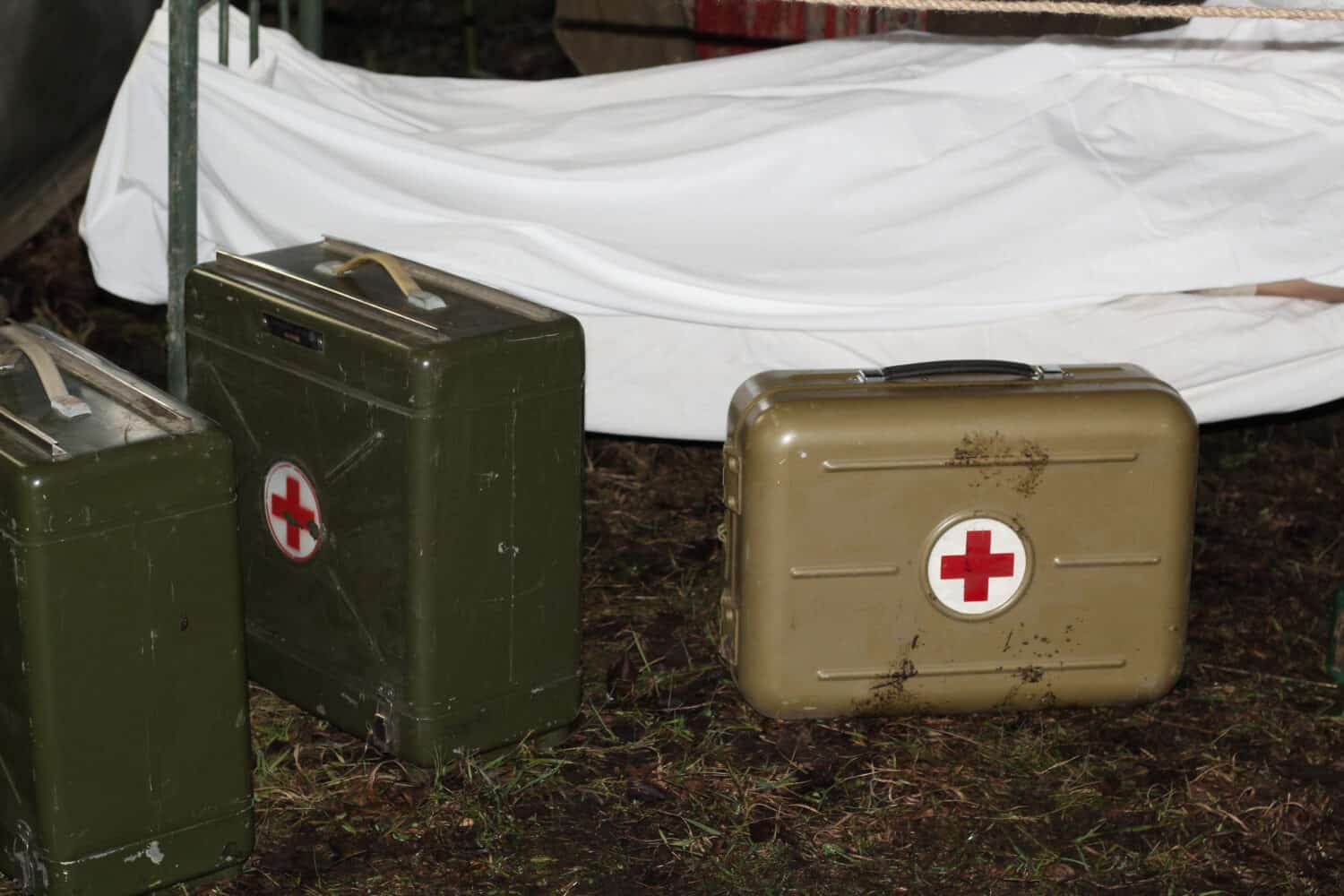
Security issues are not the only threats facing much of the world’s population, though. Rampant disease, the lack of proper sanitation, the absence of medical care, and little to no humanitarian aid claim many more lives than human violence in some parts of the world.
Threats From Climate Change
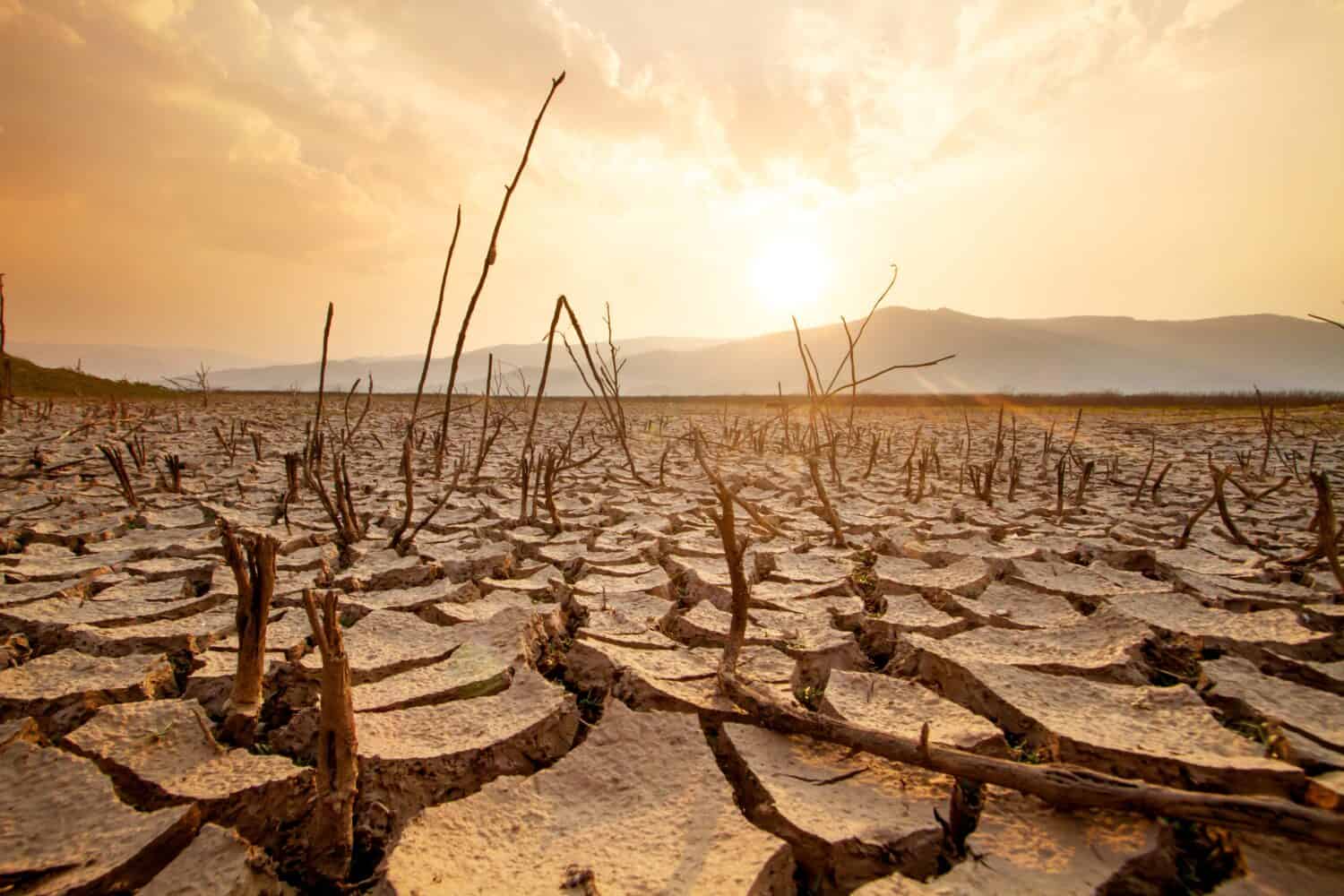
The threat of climate change also looms larger in some parts of the world than in others. Extreme weather events, famine, and other disasters are rising in these nations.
International SOS, a health and security service firm, published a study detailing these three dangers worldwide. We have broken down the most dangerous countries in each category listed by International SOS. The countries in the individual categories are not ranked, but rather are arranged alphabetically. However, there is one nation that is considered by numerous authoritative private and government agencies as the single most dangerous nation on the planet. (On a similar note, here is a list of the ten most corrupt countries on Earth. Not surprisingly, there is some overlap between the most corrupt and the most dangerous nations in the world.)
Countries With the Highest Security Threats
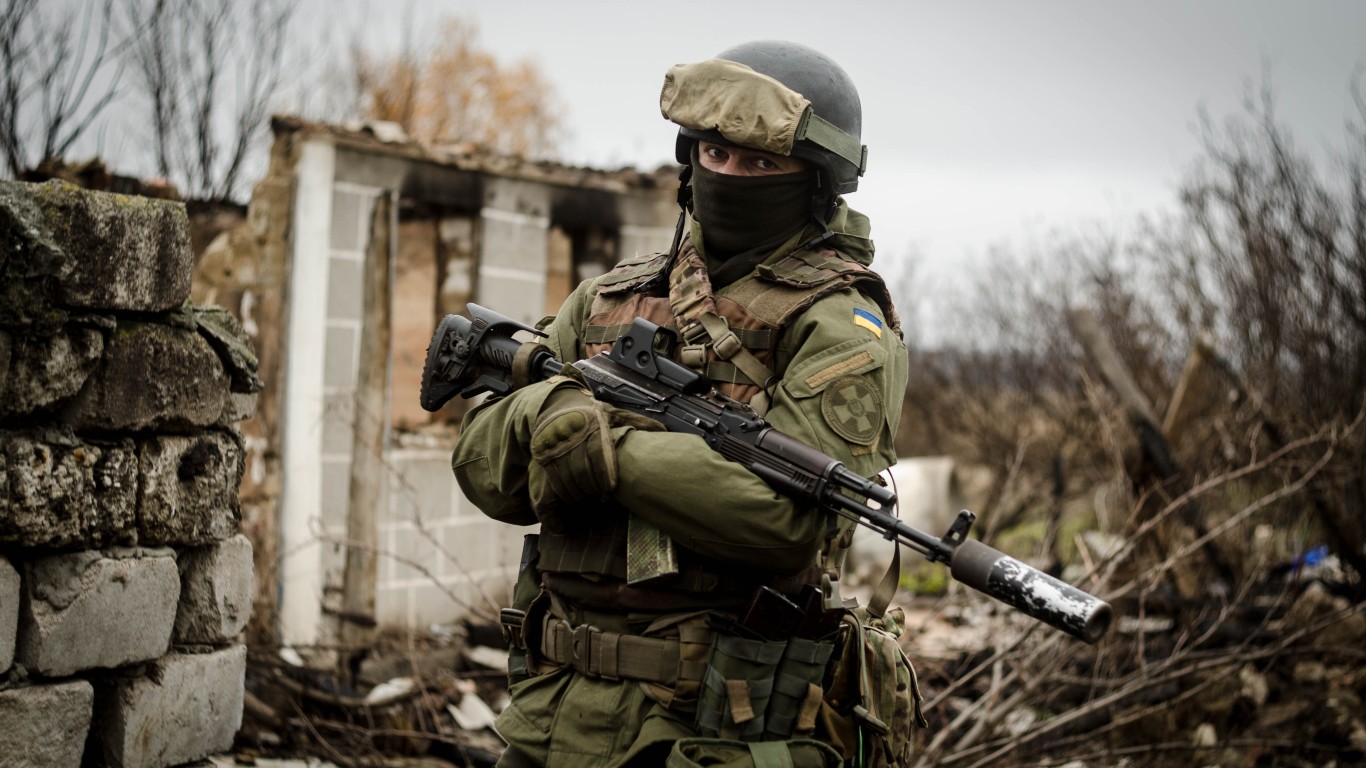
SOS International tagged these nine nations with the highest possible security threat level. Those nations are:
- Afghanistan
- Central African Republic
- Iraq
- Libya
- Somalia
- South Sudan
- Syria
- Ukraine
- Yemen
While not quite at the highest risk level, countries that saw significant increases in security risks since the last report include Lebanon, the Palestinian Territories, and Russia.
Countries With the Highest Medical Threats
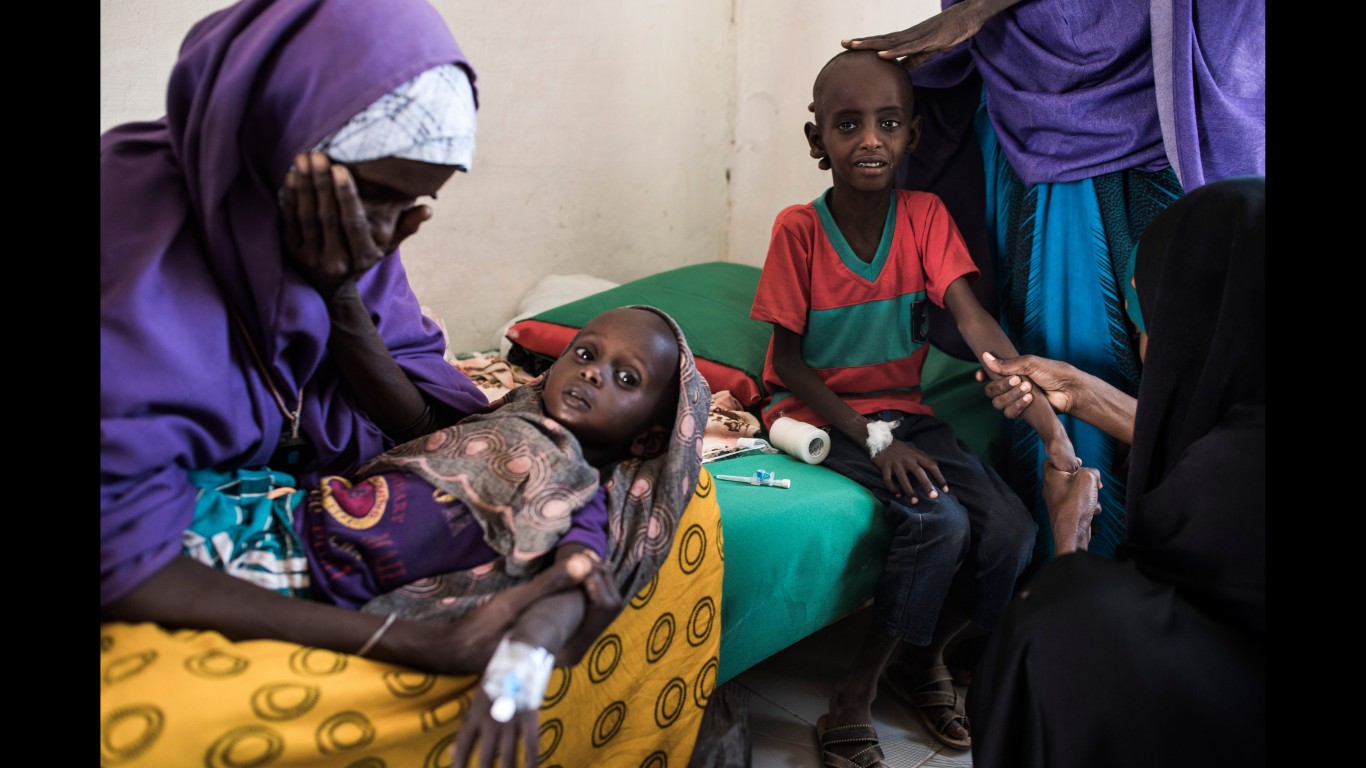
Nations with the highest health and medical threats include:
- Afghanistan
- Burkina Faso
- Burundi
- Central African Republic
- Eritrea
- Haiti
- Guinea
- Guinea-Bissau
- Iraq
- Liberia
- Libya
- Niger
- North Korea
- Palestinian Territories
- Sierra Leone
- Somalia
- South Sudan
- Sudan
- Syria
- Yemen
Countries Under the Highest Threats from Climate Change
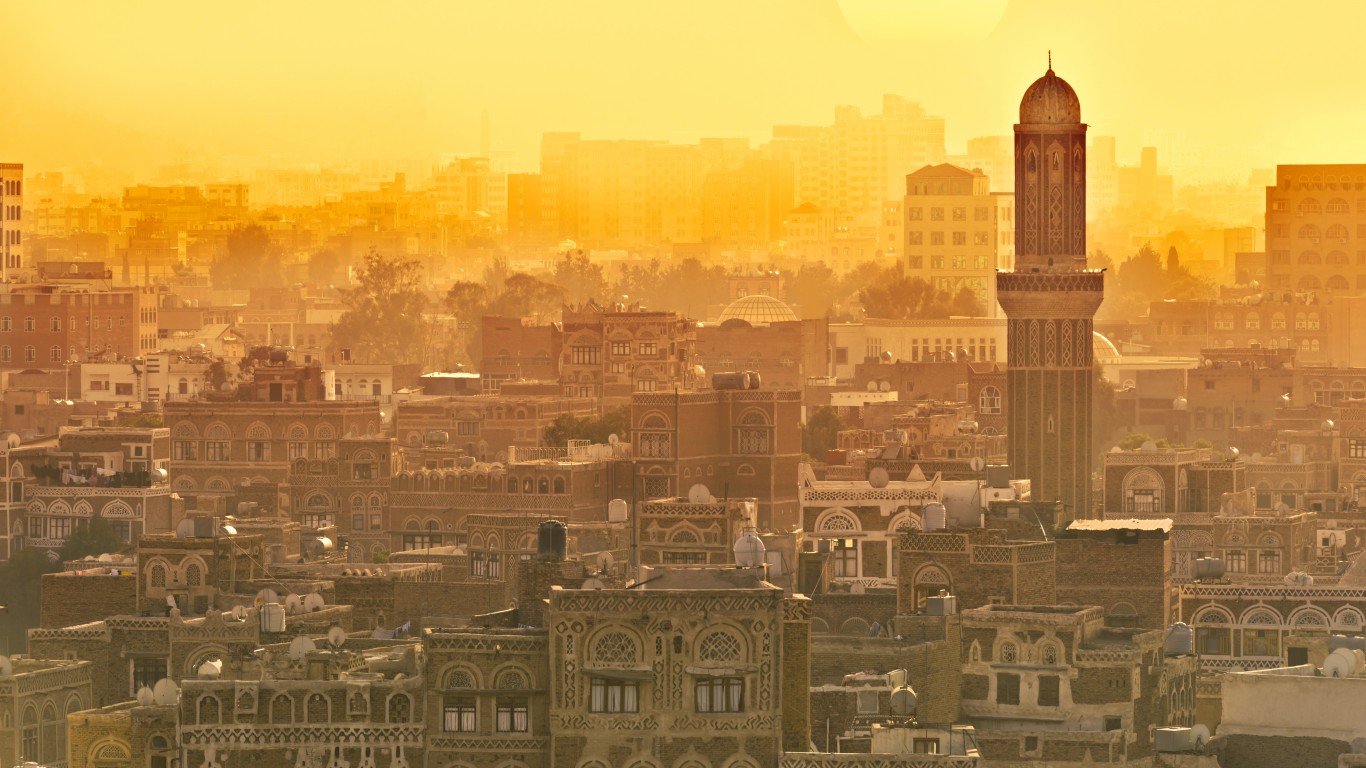
The nations that face the most severe potential impacts of climate change include:
- Afghanistan
- Central African Republic
- Chad
- Democratic Republic of the Congo
- Ethiopia
- Iraq
- Mali
- Mozambique
- Niger
- Nigeria
- Somalia
- South Sudan
- Syria
- Yemen
Countries With The Highest Combined Threats

When an extreme lack of security, lack of access to medical care, and the highest risk from climate change all come together in one place, that location is quite literally one of the most dangerous places in the world. SOS International labeled seven nations with the highest threat level in all three categories. The security, health, and climate dangers in these seven nations cannot be overstated. Here is a list of those seven countries.
1. Afghanistan
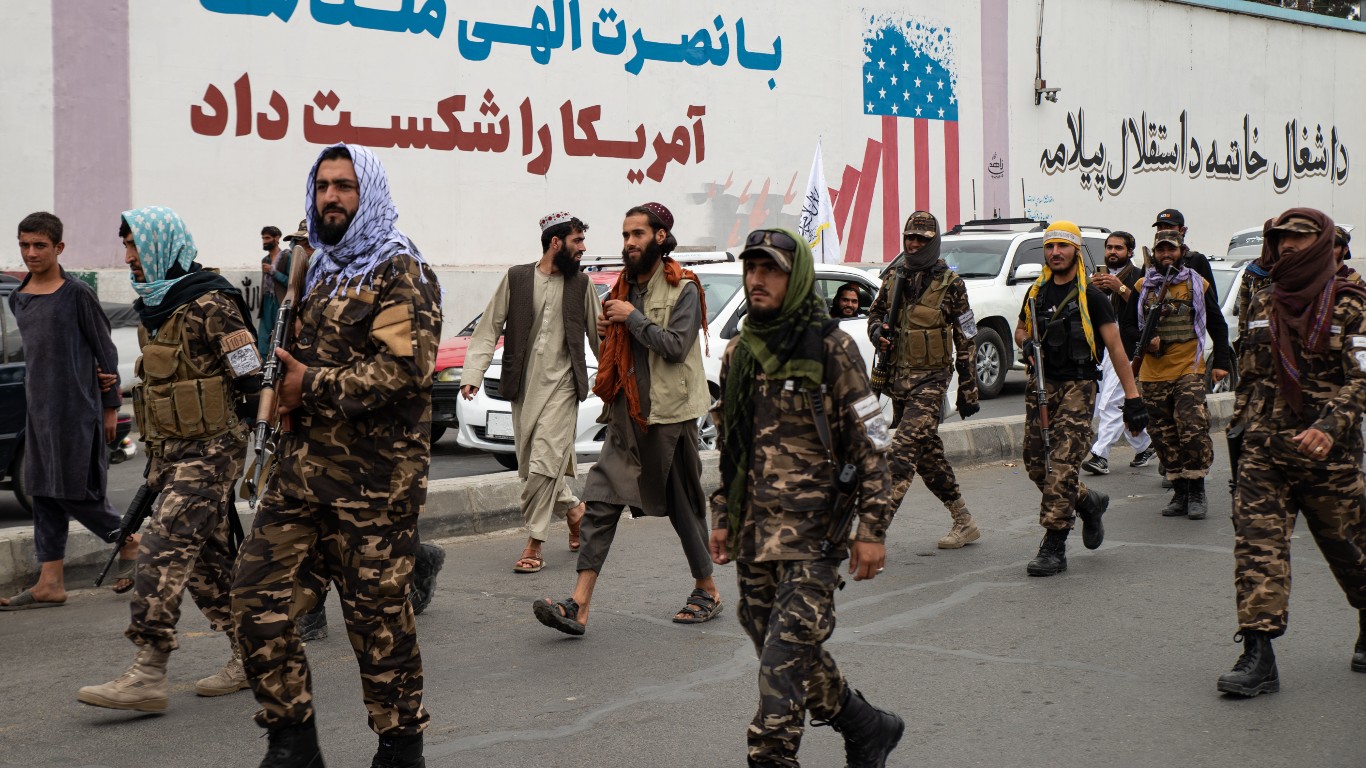
- Population: 39,232,003
- Total Area: 251,827 square miles
- Religions: Muslim 99.7%, Other <0.3%
- Government Type: Theocratic
- Capital: Kabul
2. Central African Republic
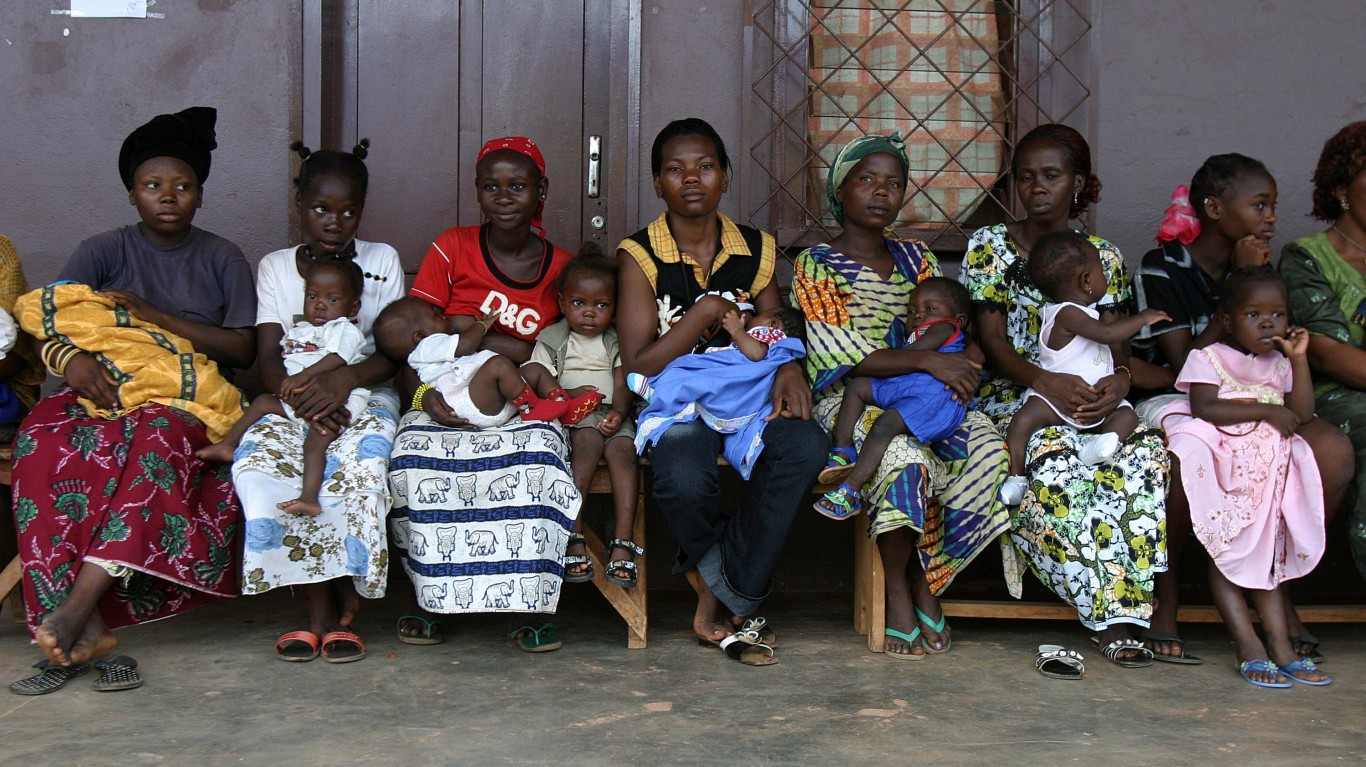
- Population: 5,552,228
- Total Area: 240,535 square miles
- Religions: Christian 89%, Muslim 9%, Folk Religionist 1%, Unaffiliated 1%
- Government Type: Presidential Republic
- Capital: Bangui
3. Iraq
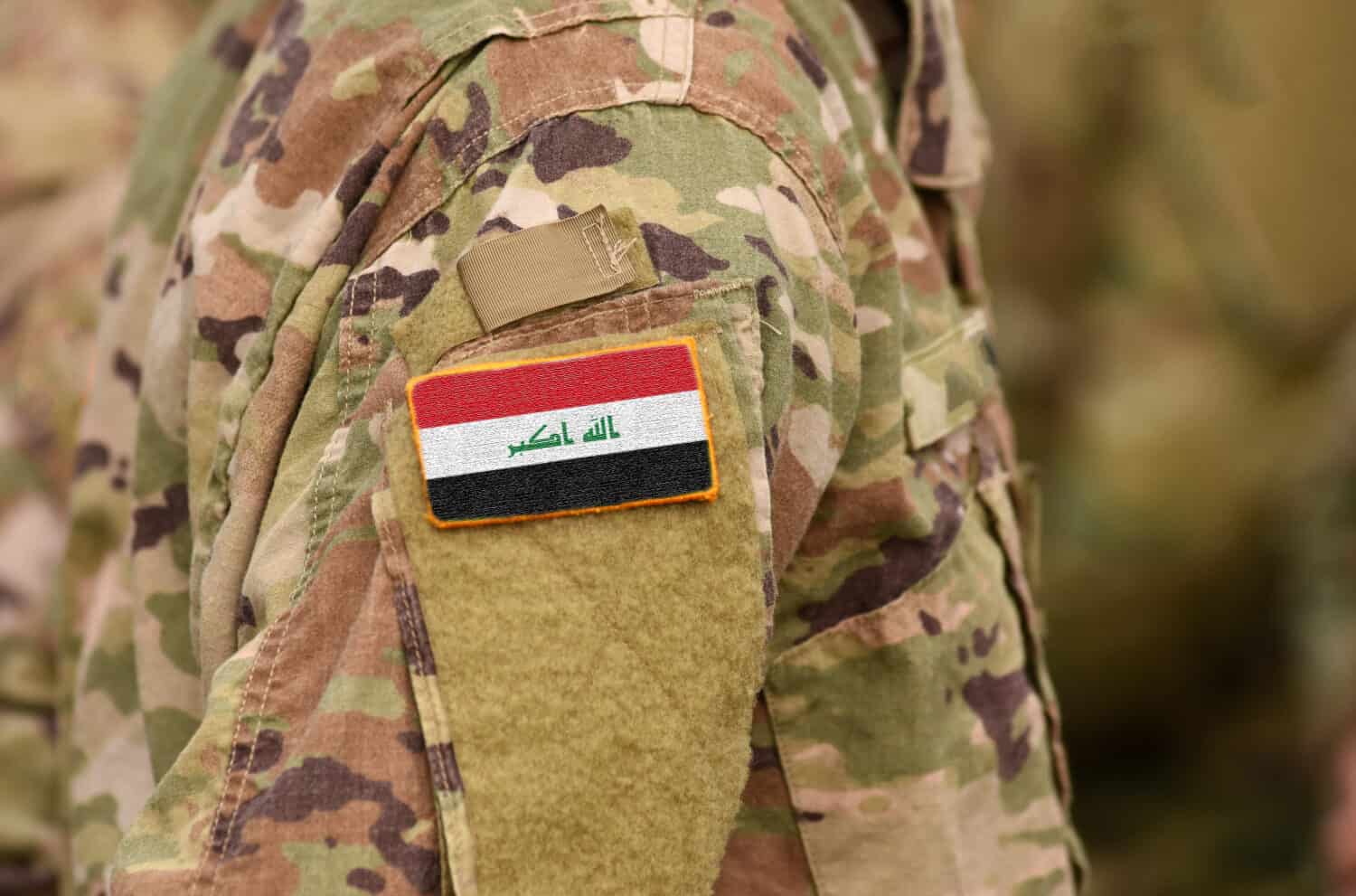
- Population: 41,266,109
- Total Area: 169,235 square miles
- Religions: Muslim 95-98%, Christian 1%, Other 1-4%
- Government Type: Federal Parliamentary Republic
- Capital: Baghdad
4. Somalia
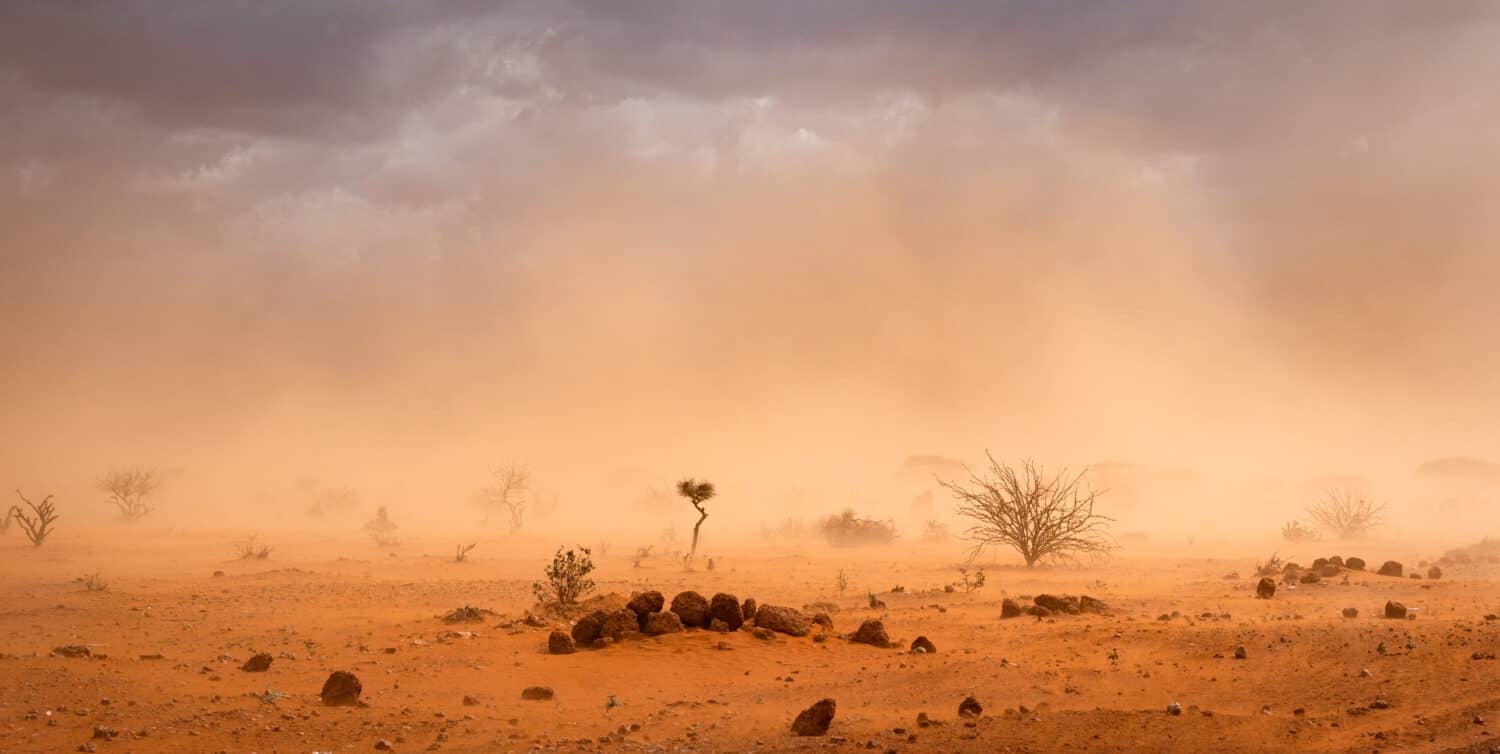
- Population: 12,693,796
- Total Area: 246,201 square miles
- Religions: Muslim (percentages and other faith numbers are unavailable)
- Government Type: Federal Parliamentary Republic
- Capital: Mogadishu
5. South Sudan
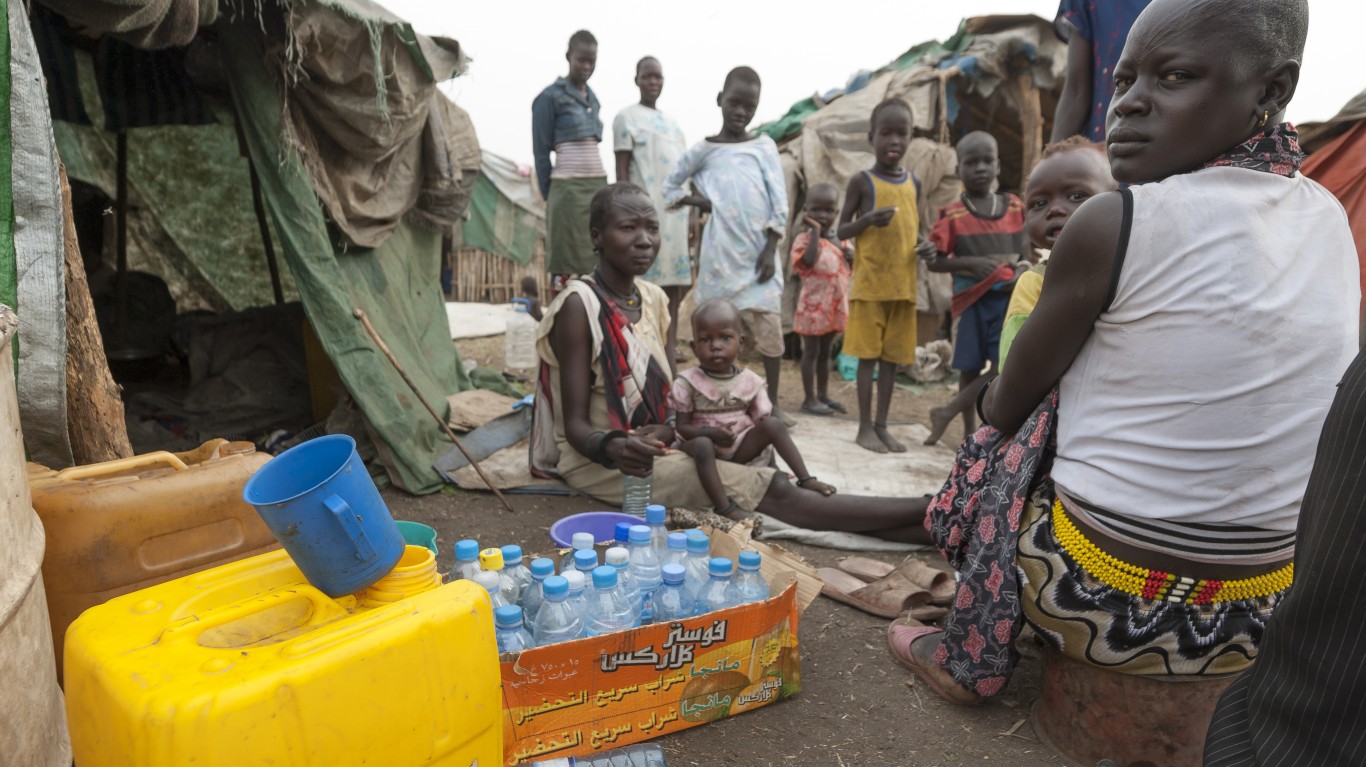
- Population: 12,118,379
- Total Area: 248,777 square miles
- Religions: Christian 60.5%, Folk Religion 32.9%, Muslim 6.2%, Other <1%, Unaffiliated <1%
- Government Type: Presidential Republic
- Capital: Juba
6. Syria
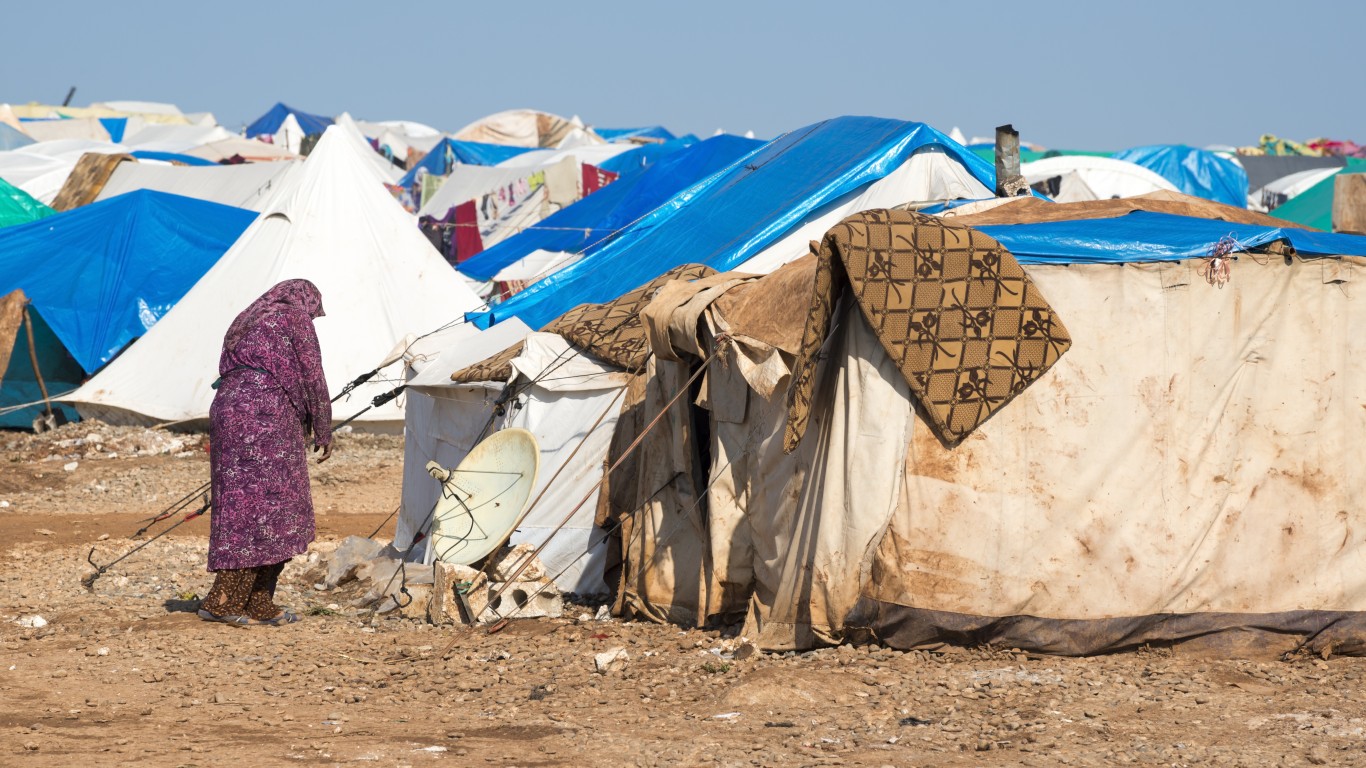
- Population: 22,933,531
- Total Area: 72,370 square miles
- Religions: Muslim 87%, Christian 10%, Druze 3%
- Government Type: Presidential Republic; Highly Authoritative Regime
- Capital: Damascus
7. Yemen
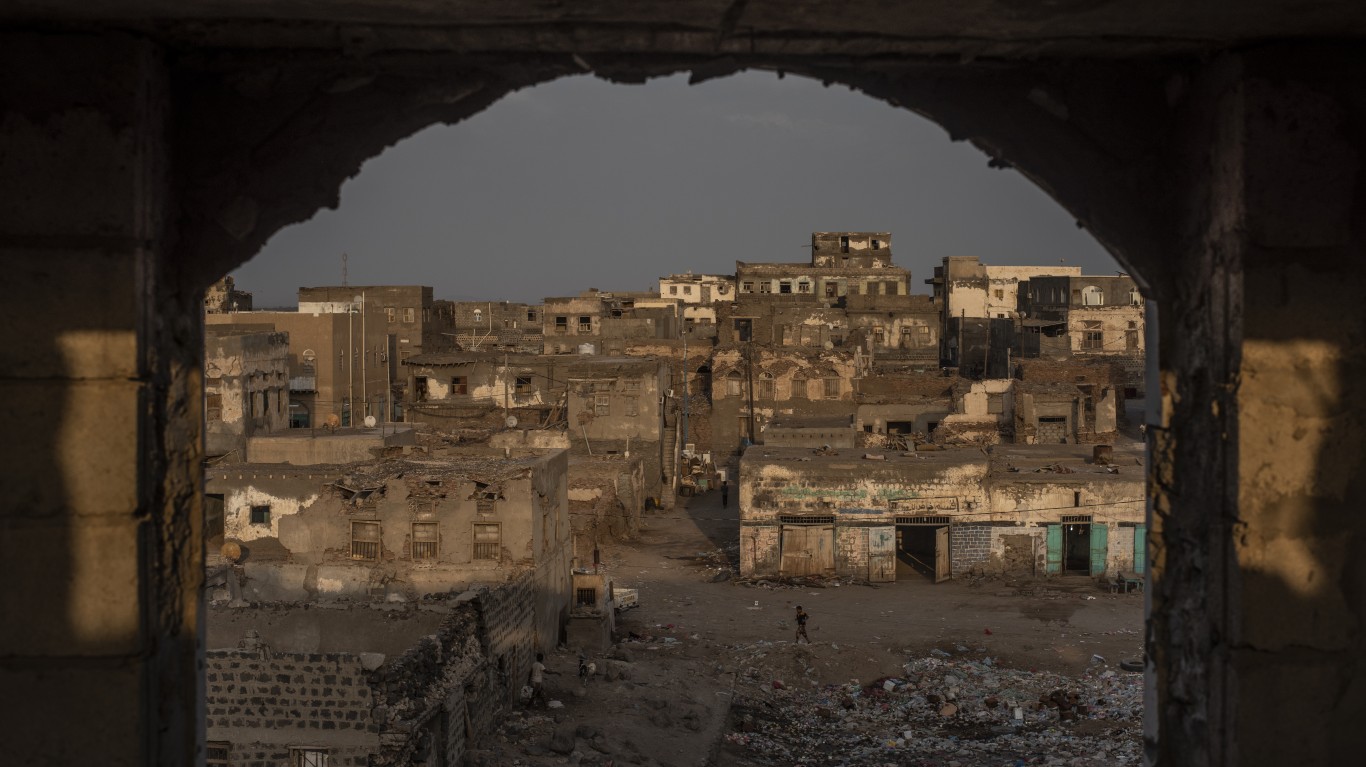
- Population: 31,565,602
- Total Area: 203,850 square miles
- Religions: Muslim 99.1%, Other 0.9%
- Government Type: In Transition
- Capital: Sanaa
The World’s Most Dangerous Country
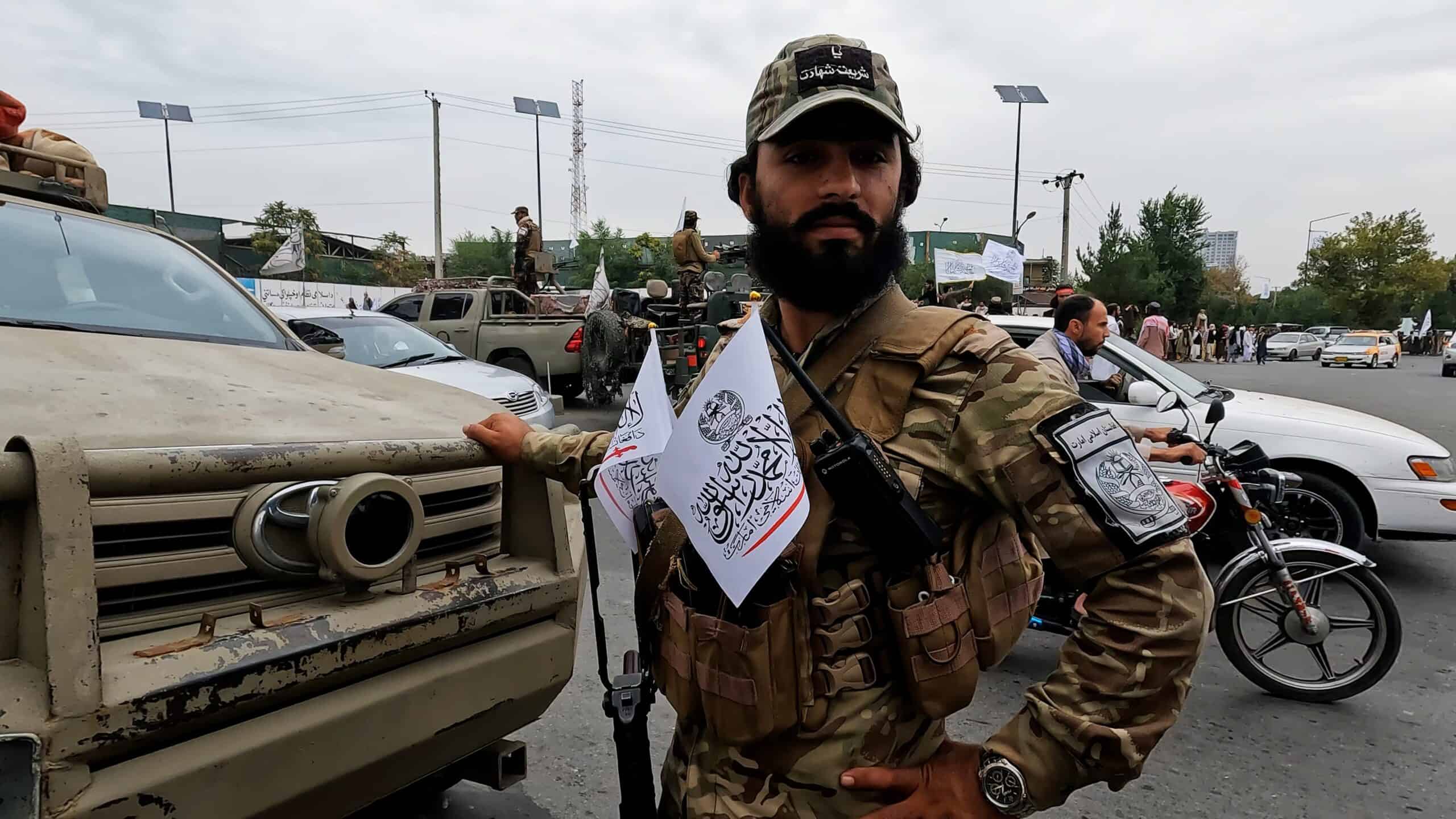
Out of these seven nations, one tops the list as the most dangerous nation on Earth: Afghanistan.
The desert climate can be quite dangerous. Jalalabad regularly sees summer temperatures above 110°F. Climate change threatens to send these scorching temperatures even higher.
Afghanistan is a consistent leader in deaths from armed conflict and terrorism. When the U.S. and NATO forces withdrew in 2021, the situation in Afghanistan became even more dire. With the Taliban in control, threats to women have skyrocketed. Religious persecution has intensified.
It is estimated that more than 90% of Afghans are impoverished. Access to medical care is practically non-existent in much of the war-torn country. Afghanistan is experiencing a humanitarian crisis on every imaginable level.
U.S. State Department Warnings Regarding Afghanistan
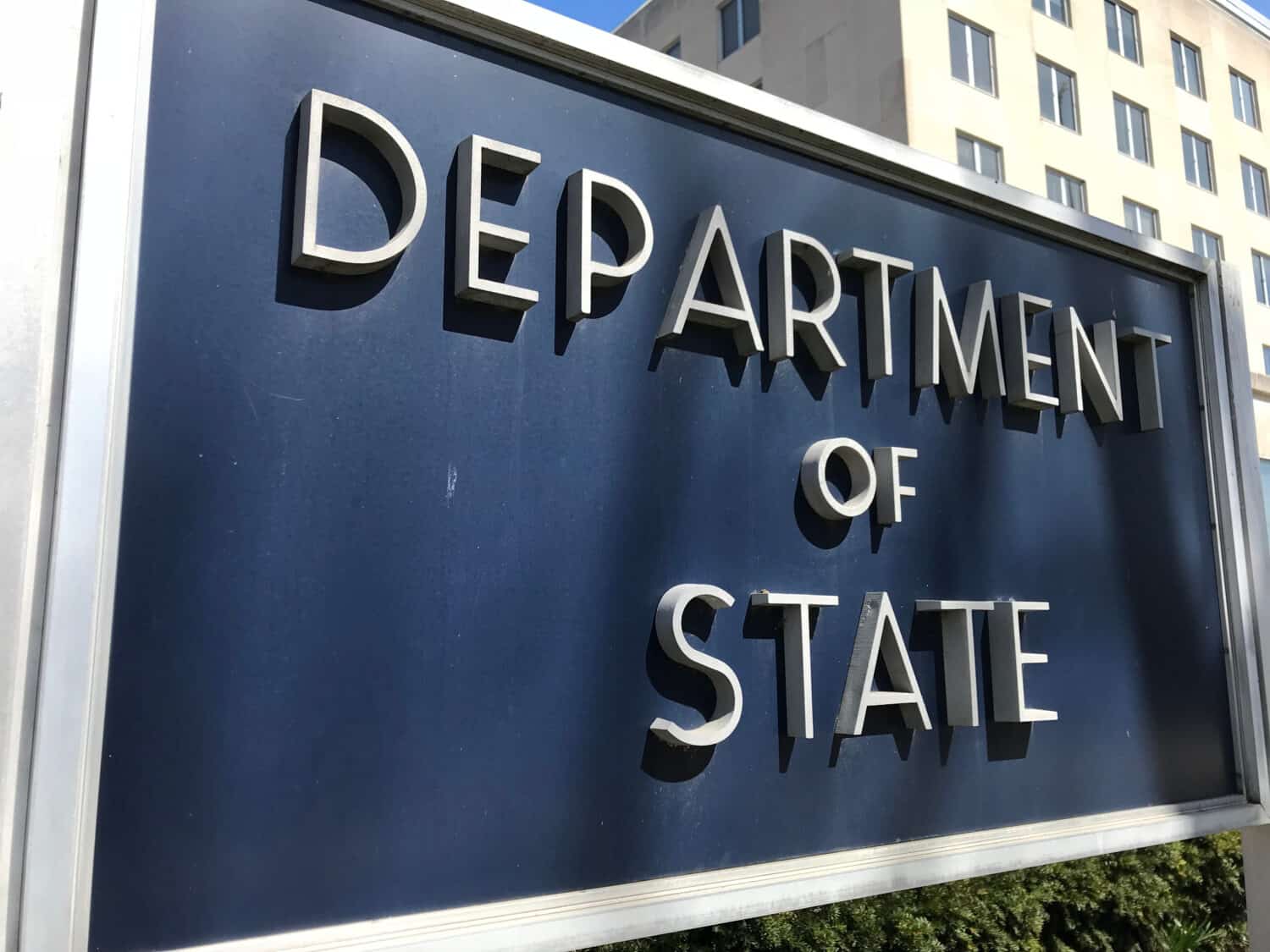
The U.S. State Department has issued a Level 4: Do Not Travel advisory regarding Afghanistan, which is the highest threat level the department can assign. The State Department lists terrorism, risk of wrongful detention, kidnapping, and crime as the biggest threats to a U.S. citizen who may venture to Afghanistan.
The State Department warns the U.S. Embassy in Kabul has suspended operations, meaning the U.S. government cannot provide any emergency emergency consular services to American citizens in Afghanistan.
Because multiple terrorist groups are operating in Afghanistan, the risk of wrongful detention is high. These groups have kidnapped and detained U.S. citizens and international aid workers.
Should a U.S. citizen choose to ignore this travel advisory and venture to Afghanistan anyway, the State Department provides some pretty ominous advice, including:
- Draft a will and designate appropriate insurance beneficiaries and/or power of attorney.
- Discuss a plan with loved ones regarding care/custody of children, pets, property, belongings, non-liquid assets (collections, artwork, etc.), funeral wishes, etc.
- Leave DNA samples with your medical provider in case it is necessary for your family to access them.
In case someone may still misunderstand the message, the State Department sums it up in one sentence: “U.S. citizens should not travel to Afghanistan for any reason.”
It’s Your Money, Your Future—Own It (sponsor)
Retirement can be daunting, but it doesn’t need to be.
Imagine having an expert in your corner to help you with your financial goals. Someone to help you determine if you’re ahead, behind, or right on track. With SmartAsset, that’s not just a dream—it’s reality. This free tool connects you with pre-screened financial advisors who work in your best interests. It’s quick, it’s easy, so take the leap today and start planning smarter!
Don’t waste another minute; get started right here and help your retirement dreams become a retirement reality.
Thank you for reading! Have some feedback for us?
Contact the 24/7 Wall St. editorial team.




